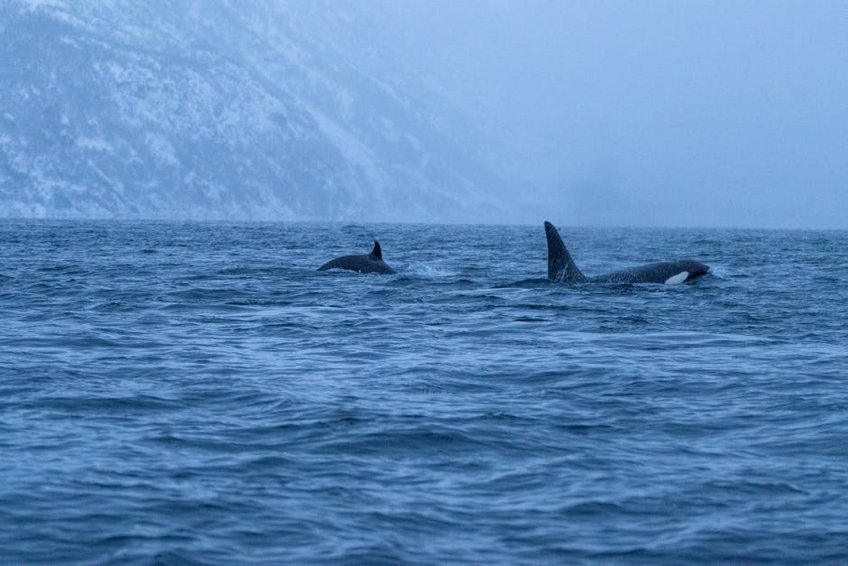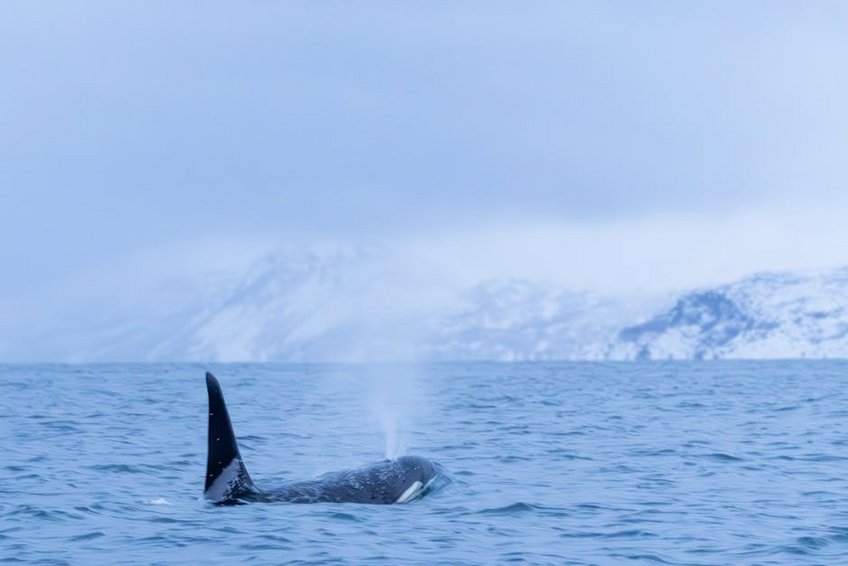Wyoming Yellowstone Winter Wildlife: Majestic Animals in Snow
Wyoming Yellowstone winter wildlife transforms the iconic national park into a serene snowscape where bison herds steam against frozen backgrounds and wolves hunt across pristine valleys. Your winter visit reveals animal behaviors unseen in summer, with elk migrating to thermal areas and foxes tracking through deep powder under crystal-clear skies. This guide covers essential viewing locations, photography techniques for low-light conditions, and practical strategies for navigating Yellowstone’s snow-covered roads and trails during the colder months.
Yellowstone Winter Ecosystem Essentials
Yellowstone National Park spans 2.2 million acres across Wyoming’s northwest corner, with elevations ranging from 5,300 to 11,000 feet creating diverse winter habitats. The park’s geothermal features maintain snow-free zones where animals congregate for warmth, while deep snowdrifts in higher elevations force wildlife migrations to lower valleys. Winter temperatures typically range from 20°F to -20°F (-7°C to -29°C), with January averaging 9°F (-13°C) at park headquarters.
Snow accumulation averages 150 inches annually in most areas, though some mountain regions receive over 400 inches, dramatically altering animal movements and visibility. The park’s reduced visitor numbers from November through April create quieter wildlife viewing opportunities, with only limited road access via oversnow vehicles or guided tours. Meanwhile, wildlife adapts through thicker fur coats, hibernation strategies, and concentrated feeding near thermal areas.
Yellowstone’s Winter Animal Adaptations
Yellowstone’s wildlife develops remarkable survival strategies during the harsh winter months that make viewing particularly fascinating.
- Bison grow insulating winter coats up to two inches thick and use their massive heads to sweep aside snow reaching food sources beneath the surface.
- Elk migrate from high country to the Northern Range and geothermal basins where snow is shallower and grasses remain accessible throughout winter.
- Wolves form larger packs to hunt more effectively, often targeting weakened elk and bison struggling in deep snow conditions across the Lamar Valley.
- Budget option: $800-$1,200 per person for 5 days includes camping outside the park, self-guided viewing from open roads, and bringing your own food, with oversnow transport as your biggest expense at $150-$250 per day.
- Mid-range option: $1,800-$2,500 per person covers lodge accommodations inside the park, guided snowcoach wildlife tours at $200-$350 daily, and restaurant meals, providing comfort and expert guidance.
- Luxury option: $3,500-$5,000 per person includes premium lodges like Mammoth Hot Springs Hotel, private guided wildlife tours at $500-$800 daily, and specialized photography workshops with professional instruction.
- Thermal clothing layers including merino wool base layers, insulated mid-layers, and waterproof outer shells rated to -20°F (-29°C) or lower for extended outdoor exposure.
- Optical equipment like binoculars with anti-fog coating, spotting scopes for distant viewing, and camera gear with weather sealing and extra batteries that perform in cold conditions.
- Safety items including emergency communication devices, tire chains for your vehicle, high-calorie snacks, and a detailed map of open winter routes and emergency facilities.
- National Park Service Yellowstone Winter Guide
- Yellowstone Park Winter Wildlife Information
Key Wildlife Species and Habitats
Yellowstone’s Northern Range along the Lamar Valley provides the most reliable wildlife viewing, with open landscapes that accumulate less snow than forested areas. Bison herds numbering in the hundreds frequently gather near Mammoth Hot Springs, while wolf packs patrol the Northern Range with the highest visibility from December through February. Additionally, coyotes, foxes, and the occasional lynx leave distinctive tracks along snow-covered roads and trails.
Trumpeter swans winter on the Yellowstone River’s open stretches near Fishing Bridge, and bald eagles perch along rivers searching for fish. Bighorn sheep descend to lower elevations along the Gardner River, while moose remain primarily in willow thickets along streams where browse remains available. Remember that all wildlife remains wild and dangerous, requiring maintained distances of at least 100 yards from bears and wolves and 25 yards from other animals.
Winter Weather Patterns and Safety
Yellowstone experiences extreme winter conditions with temperatures occasionally plunging below -30°F (-34°C) during Arctic outbreaks, though averages range from 5°F to 20°F (-15°C to -7°C). Sudden whiteout conditions can develop during storms, reducing visibility to near zero and making travel hazardous even short distances. Proper preparation includes multiple thermal layers, insulated waterproof boots rated to -40°F, and emergency supplies in your vehicle.
Road access becomes severely limited from early November through April, with only the road from Gardiner, Montana to Cooke City, Montana remaining open to regular vehicles. Most park interiors become accessible only via oversnow transportation like snowcoaches or snowmobiles with licensed guides. Always check current conditions at visitor centers and carry tire chains, extra food, and emergency blankets when venturing into the park.

Alt: “yellowstone-winter-bison-herd-snow-steam”
Planning Your Wyoming Yellowstone Winter Wildlife Trip
Your Wyoming Yellowstone winter wildlife adventure requires careful timing between December and March when animal concentrations peak in accessible areas and snow conditions support oversnow travel. Budget approximately $1,500-$3,000 per person for a 5-7 day trip including guided tours, accommodations, and meals, with higher costs during holiday periods. Reserve snowcoach tours and lodging 3-6 months in advance, particularly for the popular Christmas and President’s Day weekends when demand spikes.
Focus your itinerary around the Northern Range and Mammoth Hot Springs areas, where wildlife viewing remains most reliable and road access continues throughout winter. Join ranger-led programs for expert insights into animal behavior and tracking techniques across the snowy landscape. Pack specialized gear including insulated binoculars, camera weather protection, and traction devices for footwear when walking on icy surfaces.
Best Time to Visit for Wildlife Viewing
Visit Yellowstone between mid-December and early March for optimal wildlife viewing, when animals concentrate in lower elevations and snow coverage provides excellent tracking opportunities. January offers the deepest snow and most dramatic landscapes, with temperatures averaging 9°F (-13°C) but sometimes dropping to -20°F (-29°C) during cold spells. Meanwhile, February brings slightly warmer conditions averaging 15°F (-9°C) with increasing daylight hours for extended viewing.
March serves as an excellent shoulder season with warming temperatures reaching 30°F (-1°C) and active wildlife preparing for spring, though snow conditions remain good for oversnow travel. Avoid late November and early December when limited services operate and animals remain more dispersed before winter concentrations form. Additionally, holiday periods around Christmas and New Year’s see higher visitor numbers requiring earlier reservations.
Budget Planning and Costs
Winter visits to Yellowstone involve specific transportation costs that vary significantly based on your travel style and accommodation choices.
Essential Preparation Checklist
Proper preparation ensures your safety and enjoyment during Yellowstone’s challenging winter conditions while maximizing wildlife viewing opportunities.
Top Wildlife Viewing Locations and Activities
Yellowstone’s winter landscape concentrates wildlife in specific areas where geothermal activity, topography, and food availability create optimal viewing conditions. The Northern Range along the road from Gardiner to Cooke City remains accessible year-round and hosts the park’s most diverse wildlife concentrations throughout winter. Meanwhile, guided oversnow transport reaches interior locations like Old Faithful and Hayden Valley where bison herds and occasional predators become visible against snow-covered backgrounds.
Lamar Valley earns its nickname “America’s Serengeti” with wide-open vistas perfect for spotting wolf packs, bison herds, and elk groups across snow-covered meadows. Mammoth Hot Springs provides reliable wildlife viewing near the park’s north entrance, with elk frequently grazing around the historic buildings and bison traversing the terraces. Additionally, the Madison River area accessible via snowcoach offers opportunities to see trumpeter swans, river otters, and bald eagles along partially frozen waterways.
Must-See Wildlife Hotspots
Lamar Valley represents Yellowstone’s premier wildlife viewing area, particularly at dawn when wolf packs often hunt and coyotes patrol the perimeter of ungulate herds. Arrive at first light with a spotting scope to observe behavior from pullouts along the roadway, where you might witness predator-prey interactions across the snowy landscape. Meanwhile, the area requires patience as animals move across vast distances, with best viewing occurring from December through February.
Mammoth Hot Springs provides consistent wildlife sightings throughout winter, with elk herds frequently grazing near the historic district and bison traversing the lower terraces. The geothermal activity creates snow-free areas where animals congregate, offering excellent photography opportunities with steam rising against cold backgrounds. Additionally, bighorn sheep often descend to the Gardner River canyon near the north entrance, visible from pullouts along the road.
Hayden Valley becomes accessible via snowcoach from West Yellowstone or Old Faithful, revealing vast bison herds steaming against the snow and occasional coyotes or foxes hunting rodents. The valley’s open topography allows extended viewing of animal movements, though wildlife typically remains more distant than in Lamar Valley. Visit during mid-morning when sunlight illuminates the landscape and animal activity increases after the coldest nighttime hours.
Hidden Gems and Local Favorites
Blacktail Plateau Drive between Mammoth and Tower Junction remains closed to vehicles but becomes a superb snowshoeing or cross-country skiing route with excellent wildlife tracking opportunities. This less-crowded area frequently reveals fox, coyote, and occasional wolf tracks in fresh snow, with opportunities to spot animals moving between the Northern Range and interior areas. Meanwhile, the route requires self-sufficient travel as services remain unavailable and cell service proves unreliable.
Fountain Flat Drive near Madison Junction offers accessible wildlife viewing via snowcoach with thermal features attracting animals and creating dramatic photographic compositions. Bison frequently gather here in large numbers, their dark forms contrasting sharply against the white landscape with steam rising from nearby hot springs. Additionally, the area provides opportunities to see trumpeter swans on the Firehole River, which remains partially unfrozen due to geothermal heating.
Winter Wildlife Photography Techniques
Winter photography in Yellowstone presents unique challenges with low light conditions, extreme temperatures affecting equipment, and bright snow complicating exposure calculations. Use exposure compensation of +1 to +2 stops to prevent snow from appearing gray, and shoot during golden hour when the low winter sun creates long shadows and warm tones. Meanwhile, protect your camera from temperature extremes by keeping it inside your jacket when not in use and using chemical hand warmers in your camera bag.
Telephoto lenses of 300mm or longer prove essential for capturing wildlife from required distances, while wider lenses help establish the animal within its winter environment. Patience becomes your greatest asset when photographing wildlife, as animals may remain stationary for extended periods before brief moments of action. Additionally, use tripods or monopods for stability with long lenses, and consider renting specialized winter photography gear if you lack appropriate equipment.
Practical Travel Information and Logistics
Winter travel in Yellowstone requires understanding limited access points, specialized transportation options, and reduced services operating from November through April. The park’s north entrance at Gardiner, Montana remains open year-round to regular vehicles, providing access to the Northern Range and Mammoth Hot Springs area. Meanwhile, other entrances close to regular vehicles but offer oversnow access via snowcoaches or snowmobiles with licensed guides from West Yellowstone, Cooke City, and Flagg Ranch.
Accommodations inside the park operate at limited locations including Mammoth Hot Springs Hotel and Old Faithful Snow Lodge, with rates ranging from $200-$400 nightly depending on room type and season. Nearby gateway communities like Gardiner, West Yellowstone, and Cooke City offer additional lodging options with easier access to amenities, though daily travel into the park requires additional time. Additionally, dining options become limited with only a few restaurants operating inside the park and reduced hours during winter months.
| Category | Options/Features | Price Range (USD) |
|---|---|---|
| Oversnow Transport | Guided snowcoach tours with wildlife viewing stops and heated interiors | $150-$350 per person daily |
| Park Accommodations | Mammoth Hot Springs Hotel with dining room and historic charm | $220-$380 per night |
| Gateway Lodging | West Yellowstone hotels with shuttle services to snowcoach departures | $120-$250 per night |
| Guided Wildlife Tours | Expert-led viewing excursions with spotting scopes and interpretation | $250-$500 per person daily |


